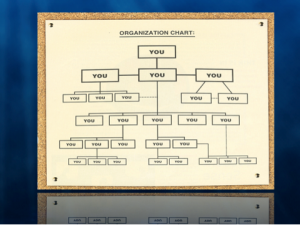
Small Business Coaching Basics: 8 Key Elements of A Top Notch Business Plan
“It’s in my head.” That was Jim’s reply when I asked to see his business plan. He’d paid me $25,000 to consult with him about his fledgling company. I was shocked…
It was not that his business plan was terrible or even wildly unrealistic. He just straight up didn’t have one.
Let me bring you in on a little secret in the Business Coaching Services industry. “It’s in my head” is the adult equivalent of, “My dog ate it.” It’s just not going to cut it in today’s business world.
Here’s the thing, you’d be surprised how often situations like this come up with first time entrepreneurs. However, Jim doesn’t fit into that category at all. What if I told you that he had already started a dozen small businesses in his 20-year tenure as an entrepreneur?
Just like all the other companies Jim started, the one I was coaching him on was caught in the small business undertow, fighting just to stay afloat. None of Jim’s companies had ever produced annual revenues of over a million dollars.
Sadly, many of Jim’s companies eventually failed and he was forced to shut them down after a few unprofitable quarters.
Does this mean Jim is a terrible businessman?
Yes and no.
No, because he’s obviously a very prodigious entrepreneur with good ideas that will actually be profitable with a good business plan.
BUT, yes, because he suffers from a mentality that’s all too common in the world of start-ups…
Many entrepreneurs are borderline adrenaline junkies, who enjoy flying by the seat of their pants. That’s another way of saying they don’t understand the importance of creating a good business plan and then reviewing it regularly.
Entrepreneurs like Jim love to think of themselves as “self-made men.” That’s exactly why they’re hesitant to seek out business coaching services. Truth be told, they don’t want to share the credit if their business takes off.
It’s purely a vanity move for many entrepreneurs. Unfortunately, sharing the spotlight isn’t what they should be afraid of. It’s the downward spiraling feeling of their business crashing into the turf that should be guiding their decisions.
Those Who Don’t Plan To Grow, Won’t…
Sure, lots of successful entrepreneurs love to talk about how they just lucked their way into success…
That may work for some, but it’s absolutely NOT any kind of plan. For every one of these guys, there are tens of thousand more who crashed and burned, simply because they lacked a plan.
If you don’t develop a plan for growth, you may still grow, but your growth will inevitably be unbalanced and disproportionate — putting you organization in a very dangerous and unsustainable position.
That’s what most people don’t realize. Uncontrolled growth can actually put your company at risk. That’s why planning for growth is essential.
According to massive business coaching services firm, PricewaterhouseCoopers, a full two-thirds of all fast growth companies develop some type of business plan. Of the other third, I’d hazard to guess that two-thirds of them WISH they had developed one.
Here’s what most people don’t realize: The exercise of actually drafting a business plan is often more important than the plan itself.
Developing a business plans and writing it in pen forces you to focus on the fundamentals of your business. It makes you think through your next steps and specific strategies and tactics.
Most importantly, this exercise forces you to face the cold hard facts. It may sound a little cheesy, but the most important entrepreneurial/executive skills is being able to face the facts, all the time…
Not just the pleasant, happy facts — the cold hard facts.
In my career, I’ve known so many highly intelligent business owners whose businesses failed because they refused to acknowledge the struggles their business faced. Almost all of those enterprises could have been saved with a good business plan, or a small business coach.
The Eight Key Business Coaching Basics Of A Business Plan
1) Executive Summary: The executive summary is a clear and concise statement about what you want as a company. Make it a synopsis of the entire business, what you’re offering, how you’ll produce it, financials, etc. It should be no more than one page, tops!
2) Market Analysis: This is where you can get into the particulars of your market and how your company will gain a competitive advantage.
Once again, this is a great exercise. A market analysis pushes the entrepreneur to become familiar with all aspects of the market, so they can clearly define and understand their target market.
You can begin by defining the market in terms of size, structure, growth prospects, trends and sales potential.
Once you’ve accomplished this, you can work with your business coach to position your company for success.
The market analysis stage also forces you to get realistic about pricing, distribution and marketing strategies. Not the ones you scribbled down on a cocktail napkin… the real ones.
In addition, a thorough market analysis will give a glimpse of the health and growth potential within your industry, giving you the necessary ammunition to develop a reasonable forecast for your organization’s future.
3) Company Description: This section is basically the bird’s eye view of how all the different elements in your business fit together. A good company description should include information about the foundation of your company, how it will produce revenue, as well as the unique factors that you as an entrepreneur believe will help your company be a success.
4) Organization and Management: Just like it sounds, this section is where you’ll outline your company’s organizational structure, including all the details about the who owns your company, the functions of your management team, and the qualifications of your company’s leadership.
5) Marketing and Sales Strategies: Clearly, this is the real lifeblood of your company. Your marketing and promotional efforts create customers and those customers will generate the sales that bring cash in the door.
In this section, you’ll want to define your company’s primary marketing strategy. You’ll start with strategies, tactics and channels that have thus far created your greatest successes. After that, analyze other tactics that may be working for your competitors.
This section is constantly evolving as your business finds new ways to be successful.
6) Service and/or Product Line: This is the section in which you lay out your service and product. In other words, you define what is it that you are actually selling.
This one’s usually a big eye-opener, because it’s requires business owners to discern between benefits and features — a biggie. Benefits, not features, will allow you to establish your unique selling proposition.
If you’re still a little unclear on what the difference between a feature and a benefit is, consider this: A feature may be what makes your product different from the competition, but a benefit is what makes it BETTER.
7) Funding Requirements: This is where a small business coach is worth his or her weight in gold. A coach can help you determine the amount of funding you will need to start or expand your business.
They’ll help you analyze the best and worst case scenarios and keep you realistic. It’s not as difficult or painful as you might think.
8) Financials: There’s a reason that this is step #8. That’s because you can only develop your financial plan AFTER you have analyzed the market and set clear objectives. You should include three to five years of historical data.
Here’s the big takeaway: A good business plan is never meant to be written or read once. You have to revisit your plan quarterly at least, but monthly is even better.
Any good businessperson understands that plans evolve and change as your business grows and your market environment changes. It’s a lot like pruning a rosebush. You’ll cut off branches that don’t produce in your business, and those changes should be reflected in your business plan.
As a veteran in the business coaching services industry, I fully believe that if you take all of these 8 steps to heart, you literally CAN’T fail.


 25. Apr, 2012
25. Apr, 2012 




